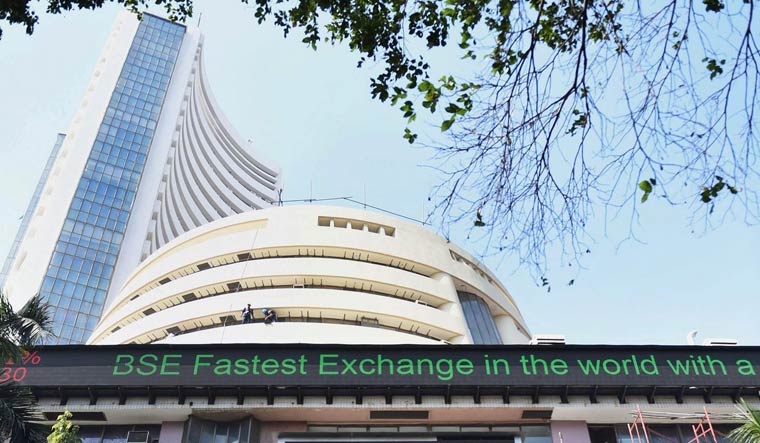
The federal government launched financial development figures for the January-March quarter on Wednesday. GDP development of 6.1 per cent within the fourth quarter, considerably larger than the 4.4 per cent recorded within the October-December quarter left many pleasantly shocked.
The sturdy development within the final quarter of 2022-23 monetary 12 months pushed the annual development fee to 7.2 per cent, nonetheless decrease than the 9.1 per cent development within the earlier monetary 12 months. A number of economists have now upgraded their forecasts for the present monetary 12 months. Nonetheless, even because the economic system is anticipated to be on a stronger footing, the expansion is anticipated to be uneven and the anticipated development charges fluctuate considerably.
Sturdy demand within the companies sector was a key driver of the GDP development. Whereas the development sector grew 10.4 per cent within the March quarter, commerce, accommodations, transport and communication companies noticed a 9.1 per cent development. Finance, actual property {and professional} companies additionally grew 7.1 per cent.
Manufacturing sector too noticed a robust restoration, rising 4.5 per cent after contracting within the earlier two quarters. Agriculture sector too noticed a 5.5 per cent development. Nonetheless, non-public consumption remained subdued at 2.8 per cent.
“Regardless of some slowdown in demand, the general financial power stays intact. The rebalancing of demand from non-public consumption to investments supported by authorities capex wants additional assist. The non-public funding exercise appears to be like strong and home financial and credit score situations stay supportive of development in FY24,” mentioned Soumya Kanti Ghosh, group chief financial adviser at State Financial institution of India.
Factoring in a choose up in development momentum, SBI’s analysis workforce has upgraded its baseline development forecast to six.7 per cent from 6.2 per cent.
“Persevering with on the trail of sturdy exercise in FY23, we challenge actual GDP development for FY24 at 6.7 per cent with Q1 at 7.8 per cent, Q2 at 6.5 per cent , Q3 at 6.3 per cent and This autumn at 6.2 per cent, amid broadly balanced dangers,” mentioned Ghosh.
Economists at Nomura Securities even have raised their GDP development forecasts for the monetary 12 months ending March 2024 in addition to for calendar 2023. However, their development projections are a lot decrease than that of the SBI’s analysis workforce.
Nomura expects GDP to develop at 5.5 per cent in 2023-24, versus their earlier expectation of a 5.3 per cent development. For calendar 2023, the forecast has been raised to five.9 per cent from 5.0 per cent.
A number of how India’s economic system grows may even be depending on how world development pans out. Within the backdrop of a pointy rise in rates of interest in a significant economies, development has already slowed and is reflecting in subdued outlook for sectors like software program companies exports.
“In our view, world development slowdown will weigh on items exports and alerts of a slowdown in IT companies factors to draw back in companies exports. Decrease inflation ought to assist rural consumption, however we count on city discretionary consumption to flat line, reflecting lagged fee hike results. Weak world demand, excessive ranges of uncertainty, elevated actual charges and a slowdown in tax collections (particularly in second half FY24) are additionally more likely to weigh on mixture capex,” mentioned Sonal Varma, chief economist (India and Asia ex-Japan), Nomura Securities.
How the monsoon rains pan out this 12 months may even need to be carefully watched over the subsequent few months as it will have a bearing on rural demand. Unseasonal heavy rainfall in lots of components of the nation has already impacted agriculture exercise in latest months.
Credit score scores company ICRA has projected India’s GDP to develop 6 per cent in 2023-24. However, there’s a draw back danger of as much as 50 bps to GDP development within the occasion that an El Nino impacts the monsoon, mentioned Aditi Nayar, chief economist at ICRA.
Alternatively, frontloaded capital expenditure by centre and states in addition to speedy execution of infrastructure initiatives might present an upside to GDP development forecasts, she mentioned.
Different issues just like the affect of upper rates of interest on consumption and discretionary purchases have to be watched out too.
“Inflation is anticipated to average in FY2024 relative to FY2023 which is a optimistic for family budgets and consumption. Nonetheless, the rise in residence mortgage EMIs and its affect on the budgets of city households and their consumption demand, contraction in exports and their affect on employment, and the affect of a possible El Nino on crops, meals costs and farm incomes stays to be seen,” mentioned Nayar.



